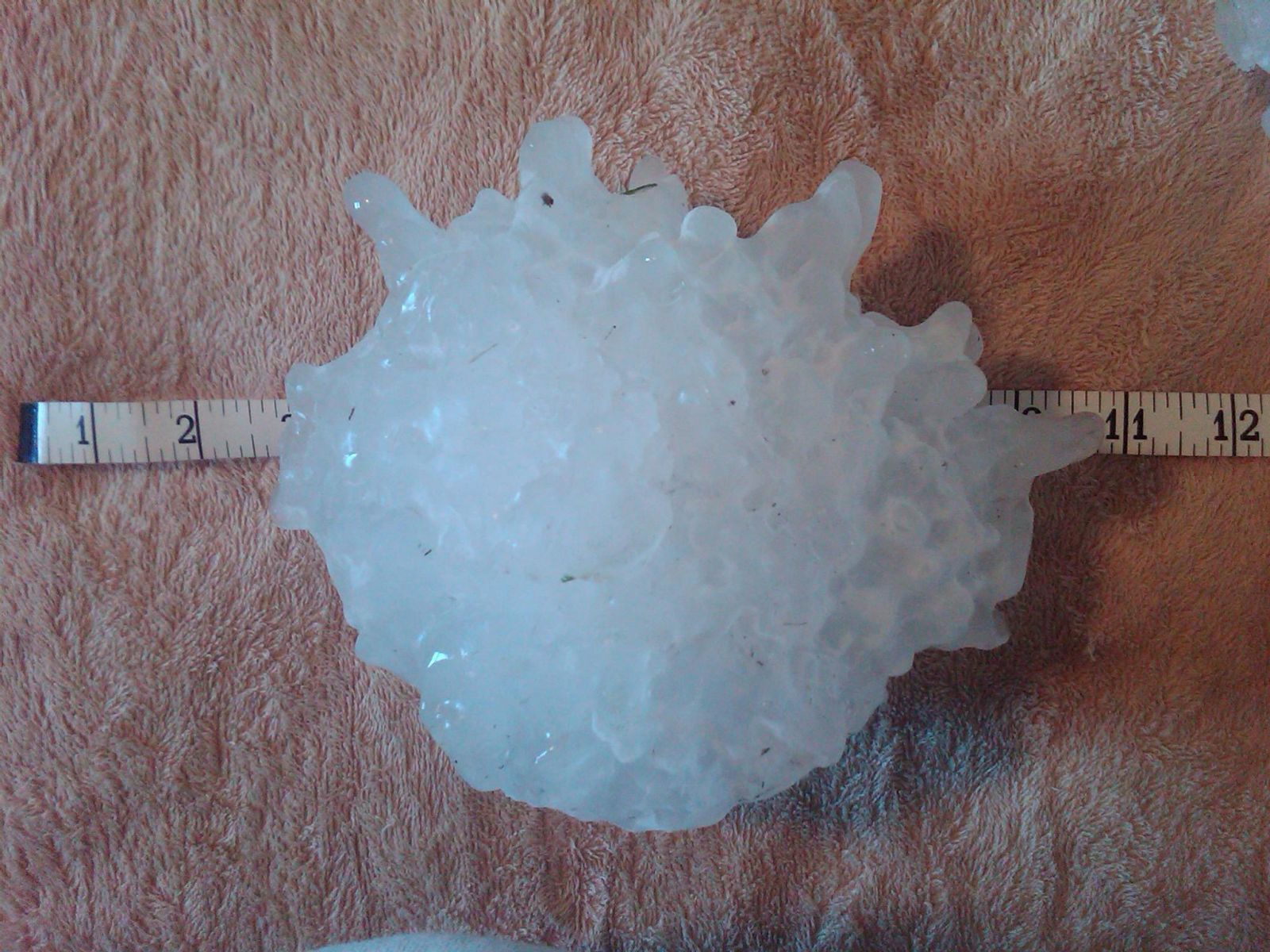


According to the National Oceanic Atmosphere Administation: hail is showery precipitation in the form of irregular pellets or balls of ice more than 5 mm in diameter, falling from a cumulonimbus cloud.
Hail forms from a complex dance between the wind and the moisture in the clouds. Inside the cumulus cloud, ice crystals form from water droplets being pushed up high in the cloud, above the freezing level by the winds (these upward winds are called an updraft). Once the hailstone gets too big for that particular updraft to carry, it falls through the cloud until the next updraft picks it up and pushes it back up above the freezing level. As this process repeats, it will grow in size. This will continue several times until the hailstone becomes too big and heavy for any updraft to hold up, causing the hailstone to fall to the Earth.
The rings in a hailstone look like a jawbreaker. They tell us clues about its life cycle. If ice forms slowly, it will be very clear, but if it forms quickly, air is trapped in it and it looks whitish. If a hail stone looks like a jawbreaker, it went through a number of different temperatures as it formed. This can help us know how many times the hailstone traveled up and down within the cloud.
Measuring the widest point of the hail stone.
July 23rd, 2010
Vivian, SD
8" in diameter

https://www.weather.gov/images/abr/EventSummaries/Thunderstorms_Tornadoes/20100723/Diameter.jpg
You can find out more information on hail at the National Severe Storms Laboratory.